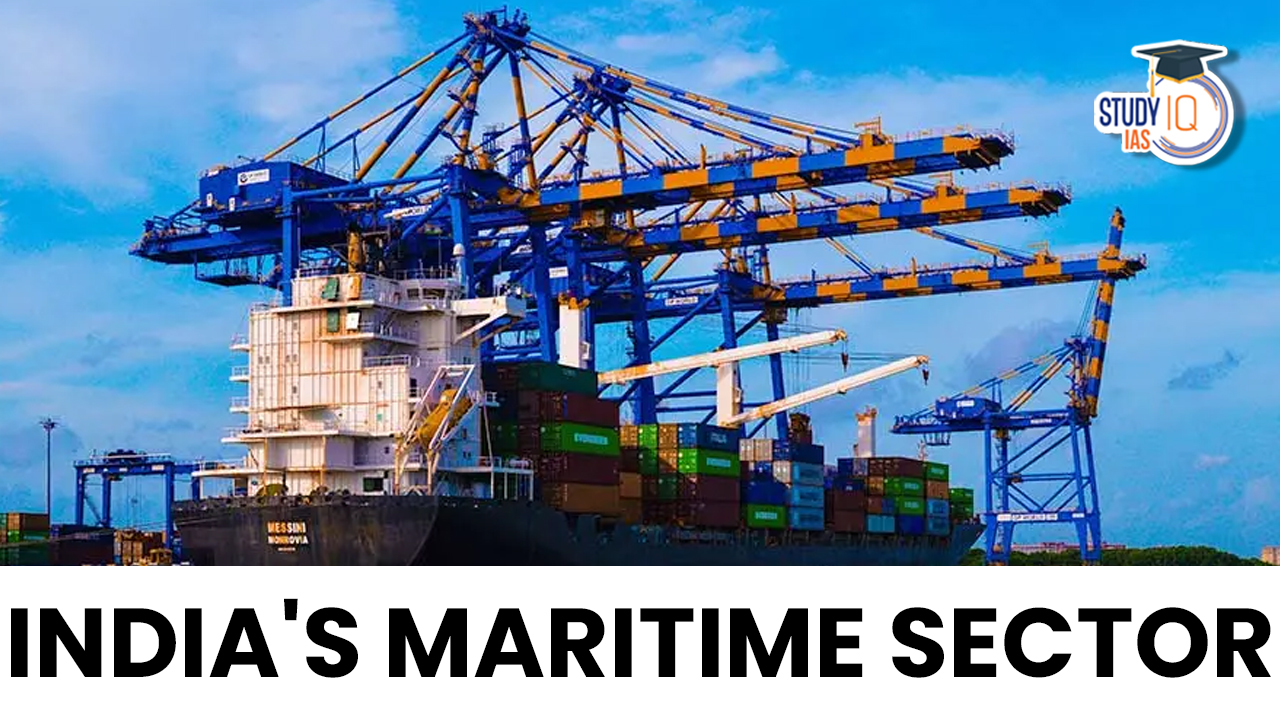Table of Contents
Context
- The Indian government has demonstrated a strong commitment to developing the maritime sector, which had been largely neglected by previous administrations.
- However, despite substantial investments, the shipping industry continues to stagnate, losing market share to foreign-flagged vessels and other transport modes.
- The Union Budget 2025 has introduced some reforms, but critical issues, particularly tax disparities, remain unresolved.
Stagnation in the Indian Shipping Industry
| Sagarmala Programme: Investment and Progress |
Economic Growth and EXIM Trade Expansion
|
- Low Growth in Cargo and Vessel Traffic: Cargo handled at major ports increased by just 26% from 1,071.76 million tons (2016-17) to 1,249.99 million tons (2020-21) (Annual growth: 2.85%).
- The number of vessels handled declined by 5.93%, from 21,655 (2016-17) to 20,371 (2020-21).
- Indian shipping continues to lose market share to foreign-flagged vessels for EXIM cargo and rail & road transport for domestic cargo.
- Lack of Competitive Financing & High Capital Costs: High borrowing costs and short loan tenures discourage investment.
- Rigid collateral requirements force shipowners to provide additional security instead of using ships as collateral.
- Banks lack an understanding of shipping cycles, leading to inflexible loan restructuring policies.
- Tax & Regulatory Disadvantages for Indian Ships: 5% IGST on ship purchases (not applicable to foreign-flagged ships).
- TDS on Indian seafarers’ salaries, while foreign ships employing Indian seafarers are exempt.
- High port charges & additional financial burdens for Indian shipowners reduce competitiveness.
- Over-Reliance on Foreign-Flagged Ships: Indian shipping companies struggle to compete globally, leading to loss of market share.
Challenges in Shipbuilding & Fleet Modernization
- Aging fleet: The average vessel age was 26 years (2022-23), which improved to 21 years (2024) with only 34 new vessels added.
- India’s global ranking in ship ownership fell from 17 to 19.
- Infrastructure gaps for large vessel construction.
- High costs of shipbuilding due to import dependency for key components (steel, machinery, spare parts).
- Customs duties on imported shipbuilding equipment increase costs.
- Skill gaps in the workforce limit shipbuilding efficiency.
- Limited Investment in Green & Digital Technologies
- Global shipping is shifting toward green energy & digitization, but India’s investment in eco-friendly vessels & digital logistics remains low.
- The lack of incentives for LNG-fueled or hydrogen-based ships hinders sustainability goals.
Government Reforms & Budget 2025 Announcements
- ₹25,000 crore Maritime Development Fund (MDF) (49% government-funded, rest from major ports).
- Infrastructure status for large vessels.
- Creation of shipbuilding clusters.
- 10-year customs duty exemption on shipbuilding spares & equipment.
- Revamped financial assistance policy for shipbuilding.
- Credit incentives for shipbreaking in Indian yards.
- Extension of tonnage tax scheme to inland vessels.
Unanswered Questions
- Lack of clarity on MDF funding (single-year or multi-year allocation?).
- ₹25,000 crore may be insufficient given the capital-intensive nature of shipping & shipbuilding.
- Need for long-term financing:
- Lower interest rates.
- Loan repayment tenures of 7-10 years.
- Urgent fleet replacement & green technology investments are required to meet GHG emission targets.
- Need for new shipyards to construct large vessels and modernise existing ones.
A Step Forward, But Not Enough
The Union Budget 2025 introduces some much-needed reforms, but funding uncertainties and tax disparities threaten to undermine progress. To truly revitalize the maritime sector, the government must:
- Ensure long-term financing at competitive interest rates.
- Expand MDF funding to meet industry needs.
- Invest in new shipyards & modernisation of existing ones.
- Remove tax disadvantages for Indian-flagged ships.
- Promote shipbuilding competitiveness through lower import duties and skill development.


 Out-of-Pocket Health Expenditure, Reason...
Out-of-Pocket Health Expenditure, Reason...
 Treasury Bills (T-bills): RBI Cuts Holdi...
Treasury Bills (T-bills): RBI Cuts Holdi...
 Fisheries Sector in India, Current Statu...
Fisheries Sector in India, Current Statu...

























